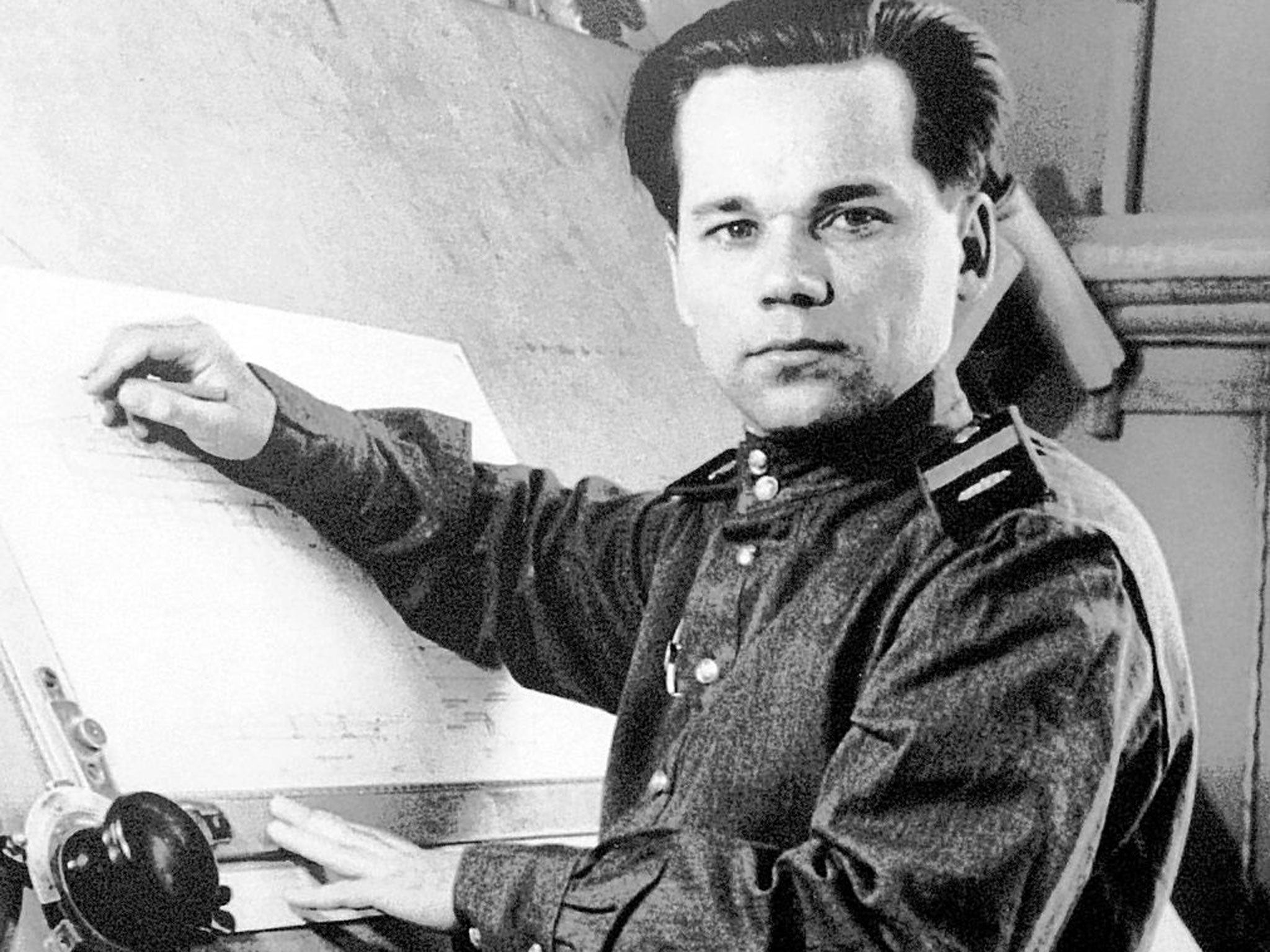Mikhail Kalashnikov: Soviet general whose design for a cheap and reliable assault rifle transformed the nature of conflict round the world

With his stocky frame, and his general's uniform smothered with medals, Mikhail Kalashnikov looked the quintessential Soviet military veteran. But he was a veteran with a difference. For one thing he was a keen and lifelong poet. For another, having been badly wounded fighting the German invader around Bryansk in October 1941, early in what Russians still call the Great Patriotic War, he conceived what would become the most famous assault rifle in the world.
In the process his name became synonym for one of his country's few truly global brands – an instrument of death that played a crucial part in many of world's armed conflicts, large and small, over the last six decades. Indeed, some have argued that, barring the atomic bomb, no single weapon has had a greater impact on modern warfare as the AK-47, better known simply as the Kalashnikov.
Mikhail Kalashnikov died a national hero, but his early life was one of hardship. As a child he and his family were deported on Stalin's orders to Siberia (although that did not stop him accepting the Stalin Prize for his work on the AK-47). He left school at 16 for a job on the railways before being conscripted into the army in 1938 and assigned to a tank unit.
From the outset he showed his talents as an inventor, coming up with devices to count the shells fired by a tank's machine gun, and to improve the effectiveness of small-arms fire through the slits in the tank's turret. But the idea that changed history came as he was lying in hospital, wounded and shell-shocked, in late 1941.
Why, a fellow soldier asked him, "do we have only one rifle between three men, while the Germans have automatics?" The seed of the Kalashnikov had been planted. It came too late to influence the outcome of the Second World War – the AK-47 was based on his winning entry in a 1946 assault rifle design competition, which he called the "Mikhtim" (a combination of the first syllables of his first name and patronymic). By 1949 it was the standard rifle for the Red Army and within a few years had become the small arms weapon of choice for Third World despots and anti-Western insurgents everywhere.
With its forward-curving, banana-shaped magazine holding 30 rounds, the AK-47 is instantly recognisable. More important, it is simple, reliable, and durable. With few moving parts it rarely jams, even in the muddiest or sandiest terrain, and can remain serviceable for up to 50 years. The Kalashnikov might not have been the most accurate of rifles, but that was a minor consideration for a weapon capable of firing 600 rounds a minute.
Not least, it is cheap. Even in today's US gun catalogues an AK-47 is listed at $200 or less, while in the field they can reputedly be had for as little as $15 or $20 (though the price tends to rise when fighting starts). Between 80m and 100m Kalashnikovs are now reckoned to be in circulation, many of them sub-standard imitations that have cost the Russian manufacturers $400m or more in revenue. To this day, the real article is made at the Izhmash factory in the city of Izhevsk just west of the Urals, where Kalashnikov lived and worked since 1949.
In his later years he sometimes regretted how his invention had facilitated so much war and killing. "I would have preferred to invent a machine that people could use and that would help farmers with their work – for example a lawnmower," he told Bild Zeitung in 2002, at the opening of an AK-47 exhibit at a weapons museum in the former East Germany.
Kalashnikov claimed never to have made a penny from his invention, and that he lived off nothing more than his military pension. The brand name, however, was a different matter. From 2003 he owned a 30 per cent stake in a German company specialising in trademarks that distributes merchandise carrying the Kalashnikov name, including umbrellas and knives – and, from 2004, Kalashnikov vodka.
But the rifle made his legend. By one estimate it has featured in at least 40 of the 60 most important wars and insurgencies since 1945. Osama bin Laden was photographed with one. An AK-47 even adorns the national flag of Mozambique, and in parts of that war-ravaged continent it earned the nickname of the "African credit card". In 2009, Mikhail Kalashnikov celebrated his 90th birthday at a Kremlin reception in his honour, hosted by president Dmitri Medvedev.
"Whenever I look at TV and I see the weapon I invented to defend my motherland in the hands of these bin Ladens," he once told an interviewer, "I ask myself the same question: How did they get it? I didn't put it in the hands of bandits and terrorists. Can I be blamed that they consider it the most reliable weapon?"
Mikhail Timofeyevich Kalashnikov, small arms designer and general: born Altai Territory, Russia 10 November 1919; married Yekaterina Kalashnikova (deceased; three daughters, one son); died 23 December 2013.
Join our commenting forum
Join thought-provoking conversations, follow other Independent readers and see their replies
Comments